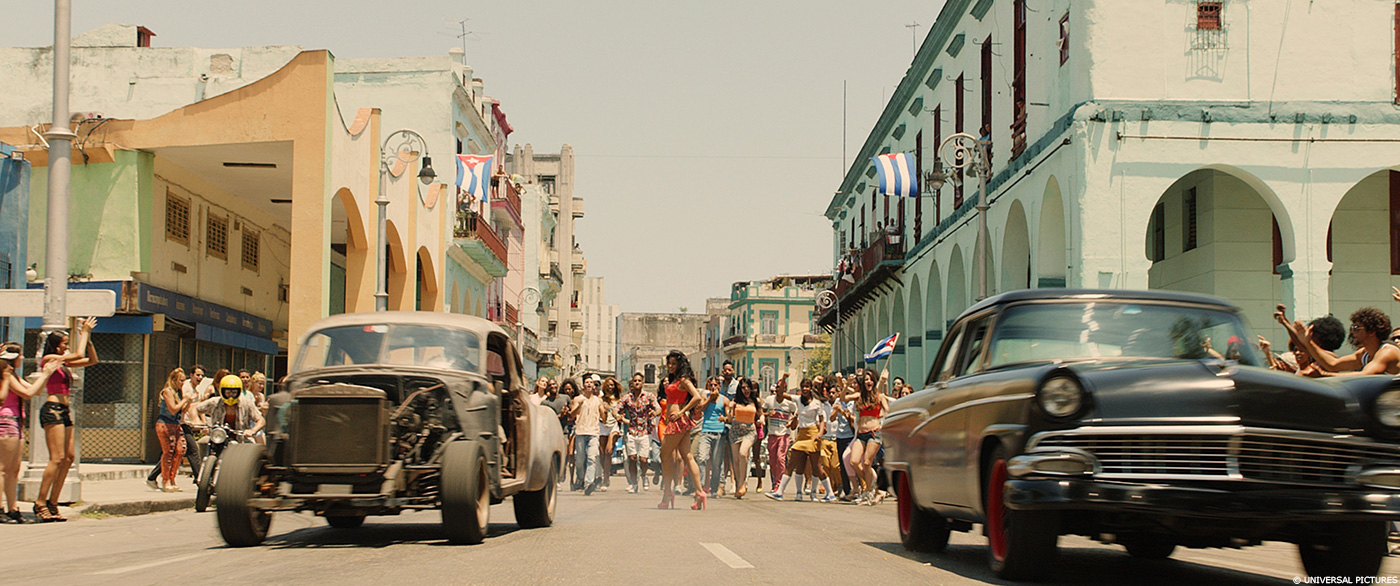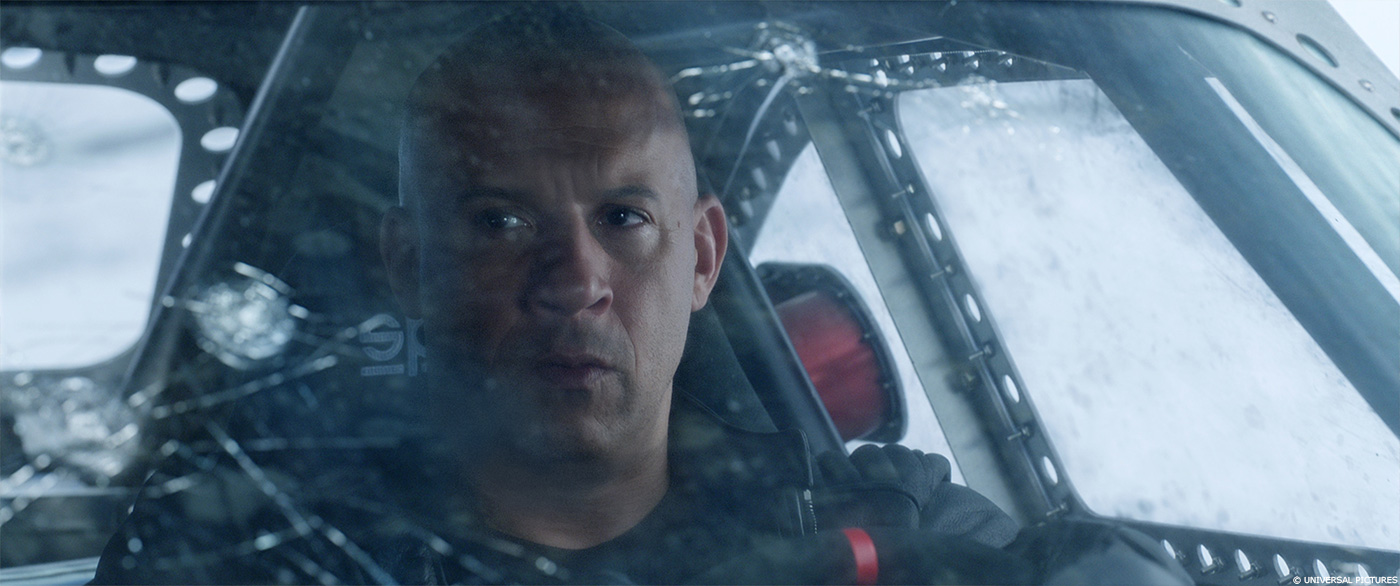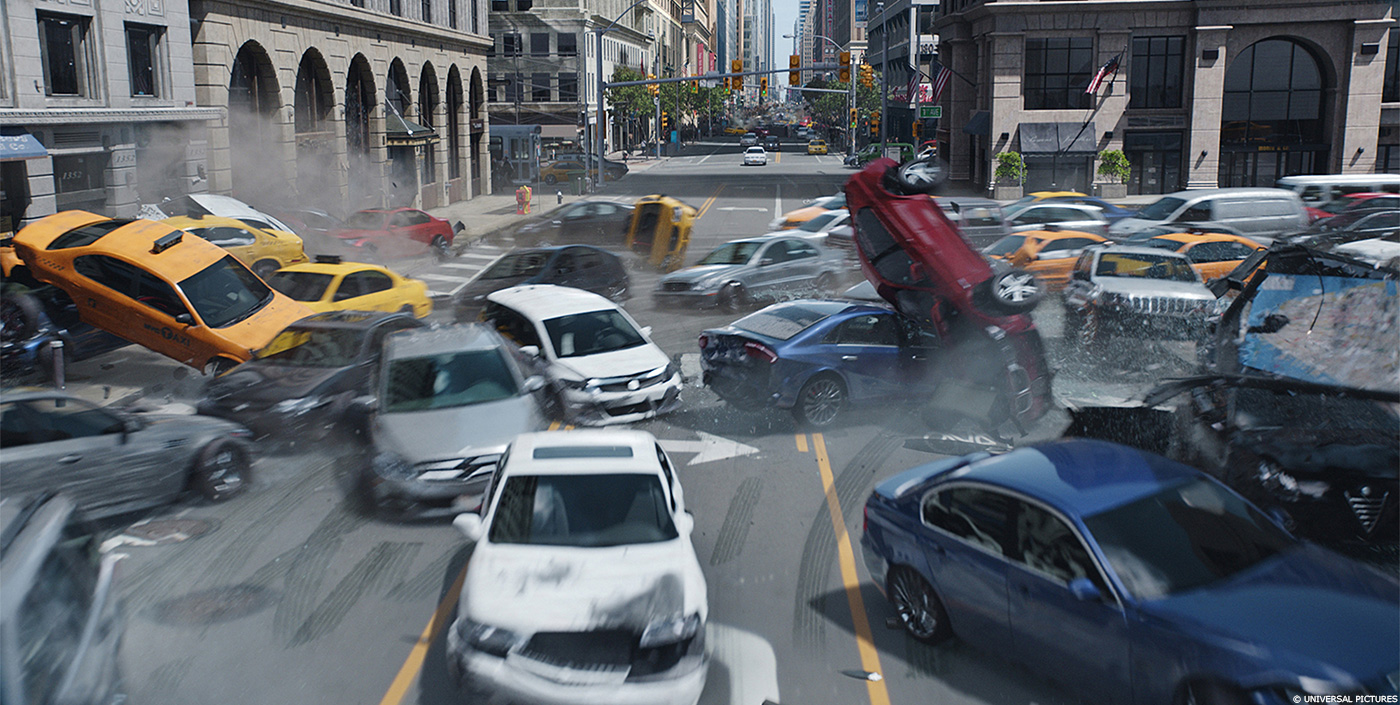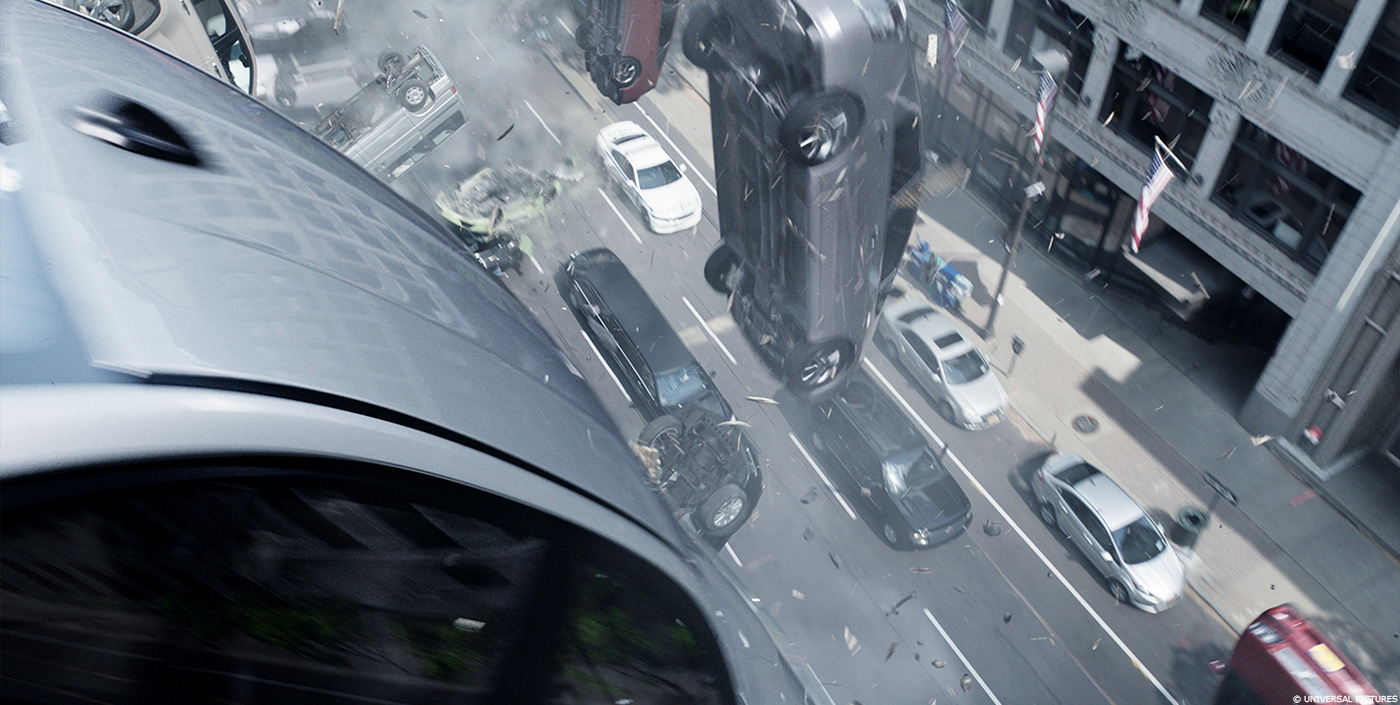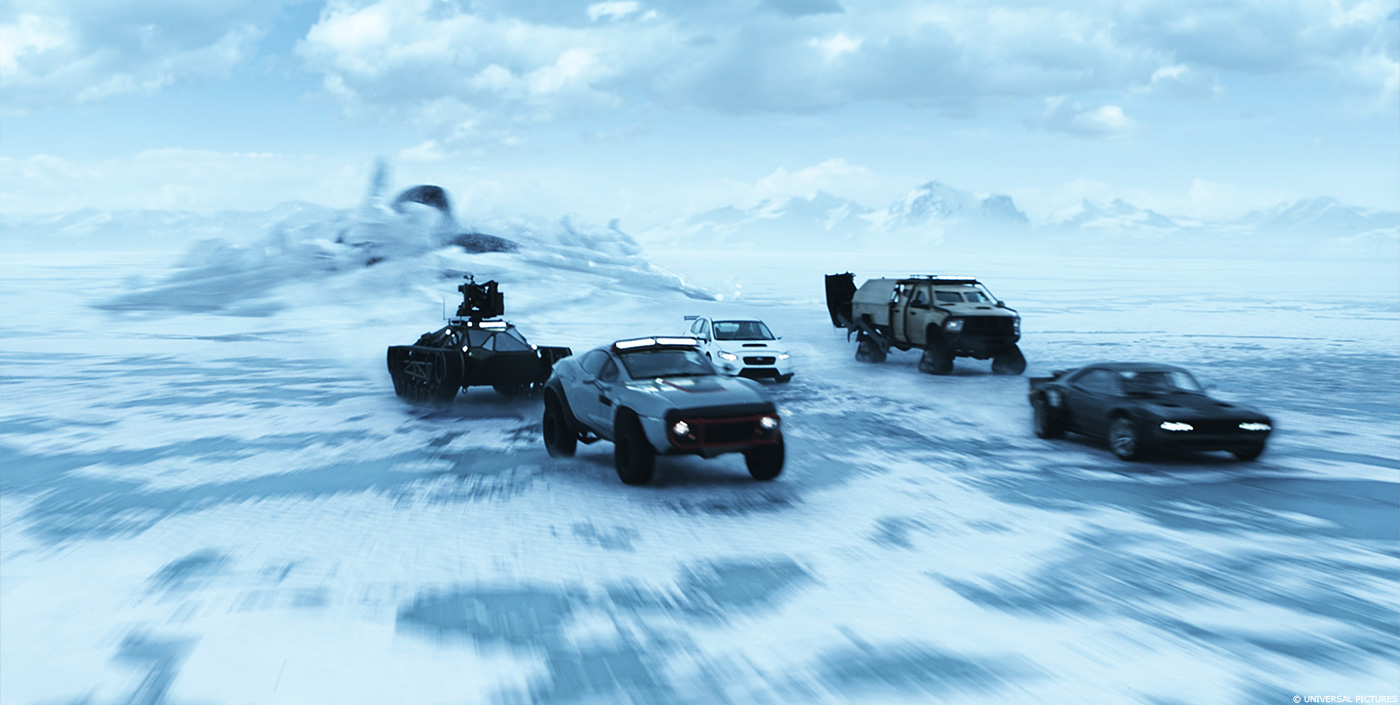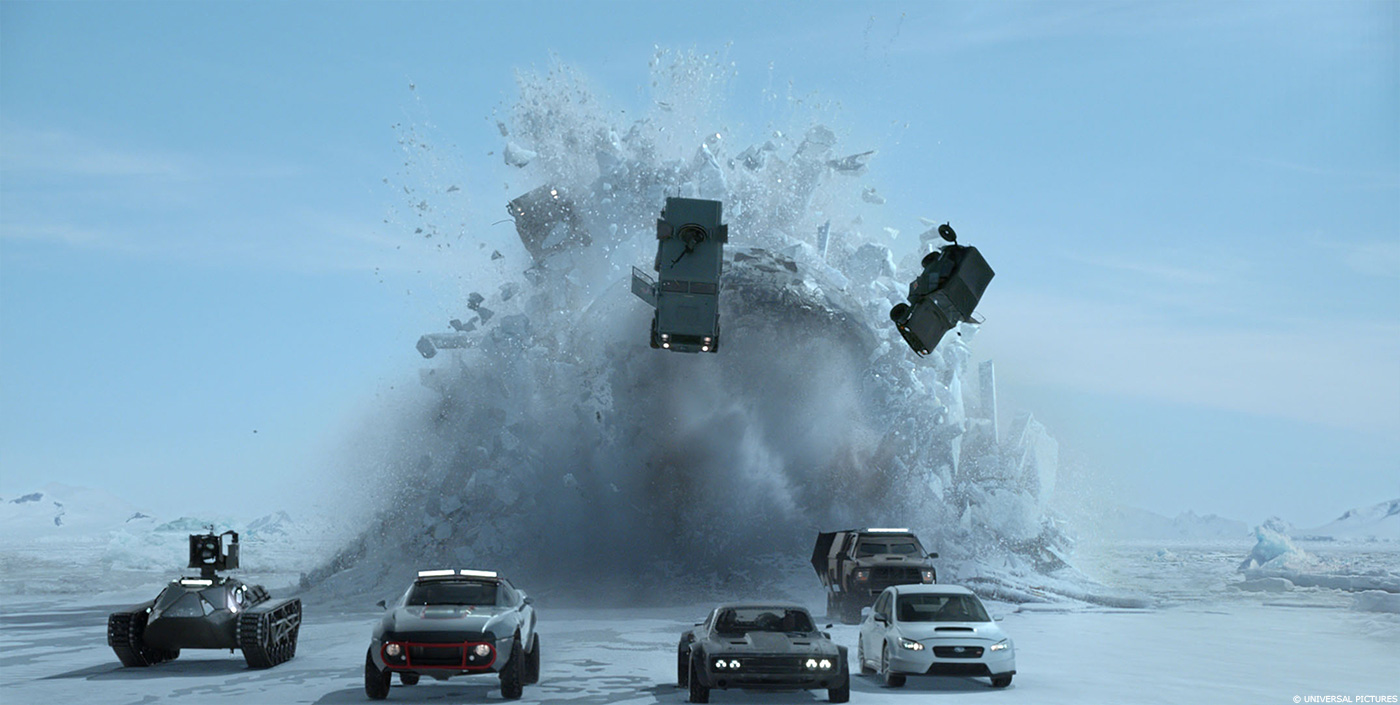In 2016, Kelvin McIlwain explained to us about his work on CENTRAL INTELLIGENCE. Today, he talks about the new episode of the FAST & FURIOUS saga with his work on THE FATE OF THE FURIOUS.
What was your feeling to be back on the FAST & FURIOUS universe?
Having been involved with this franchise since the very beginning I have developed a particular fondness for the work. So it was good to be back. Lots of familiar faces and professionals that are a joy to work with. Dare I say it’s like family? Hah.
How was the collaboration with director F. Gary Gray?
Gary’s great. He had a lot of trust in us to realize his vision.
What was his approach and expectations about the visual effects?
Gary hadn’t ever done visual effects quite on this scale before so he put a lot of faith in our department to deliver the goods. The look and feel of things were what were most important to him. There were certain visual aesthetics that he defined early on with an extensive look book that he assembled via Pinterest. It contained everything you needed to know for Gary’s vision of the movie.
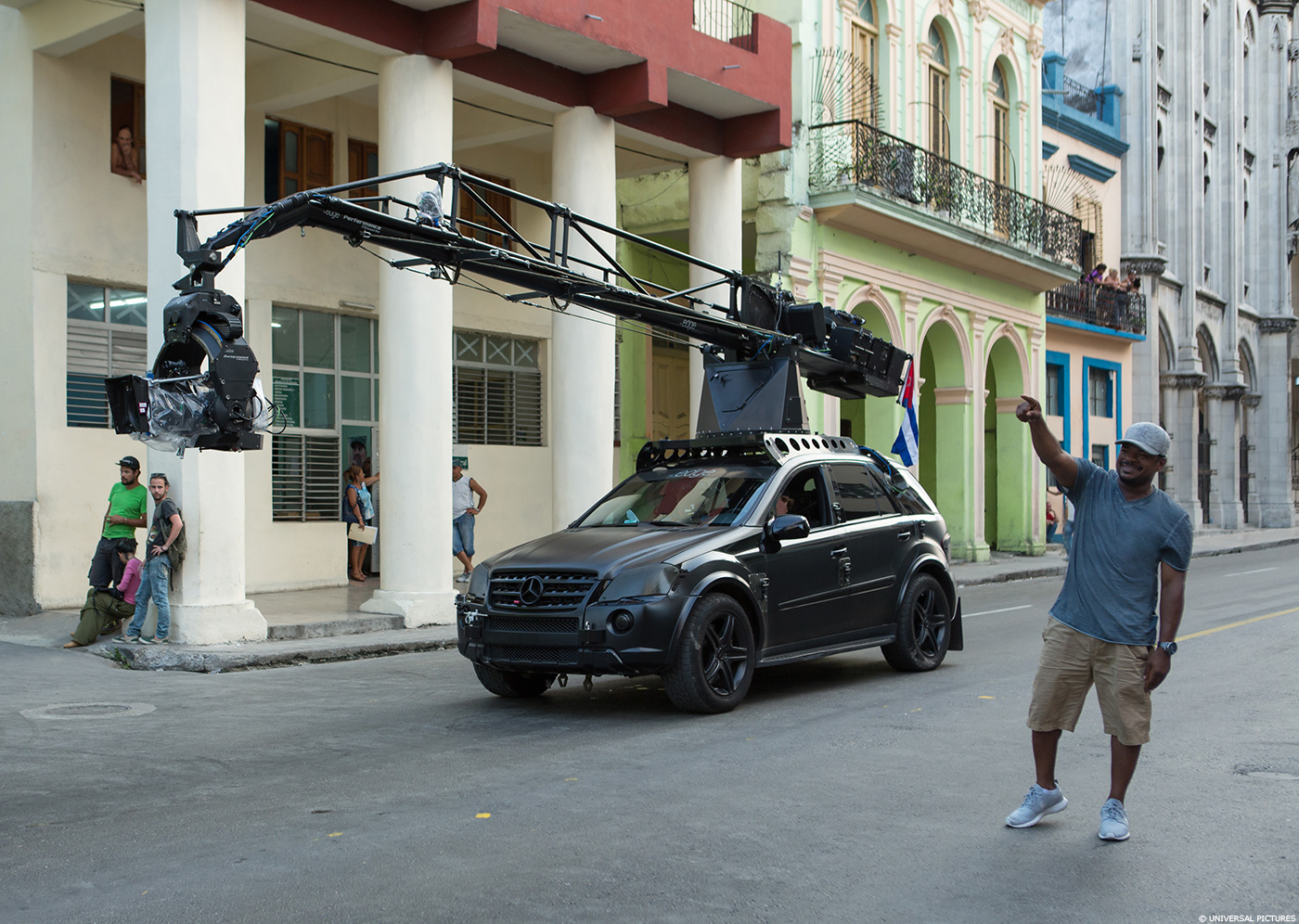
How did you organize the work with VFX Supervisor Michael J. Wassel?
Mike was the head honcho on this one. I got held over on my last project so I wasn’t able to join the team until after they started shooting. During the shoot second unit became my responsibility while Mike stayed with main unit in Cuba and Atlanta. Once we hit post we tended to divide up the responsibilities by vendor. During the first half of post we would often stay together for vendor reviews but eventually the amount of shots coming in on a daily basis was just too great. That’s when we split shots up by vendor and did separate reviews. We also had a Baselight system that we were using for finals presentations with Gary. Mike and I would take shots that were up for final and do a D.I. pass on them to make sure they were presented in the best possible light. Our vendors were asked to embed any pertinent matte channels into the EXRs so that we could do very detailed adjustments to the shots before they were presented. This created a lot more work for us but in the end it was so worth it. Our hit rate on finals reviews was very high. I became a very good colorist by the end of the show.
How does your experience on the previous FAST & FURIOUS movies help you to prepare this new episode?
There’s just so much of that past experience that is invaluable. We are constantly improving techniques and approaches to the tasks that we confront each time we make one of these. You also develop a shorthand with the principle players that are involved. There’s a lot of creative talent that bridges across the episodes. Knowing the players and having past experience with them means you know how they work and can skip that whole getting familiar stage. It’s a great way to make movies. It allows for a lot of creative continuity.
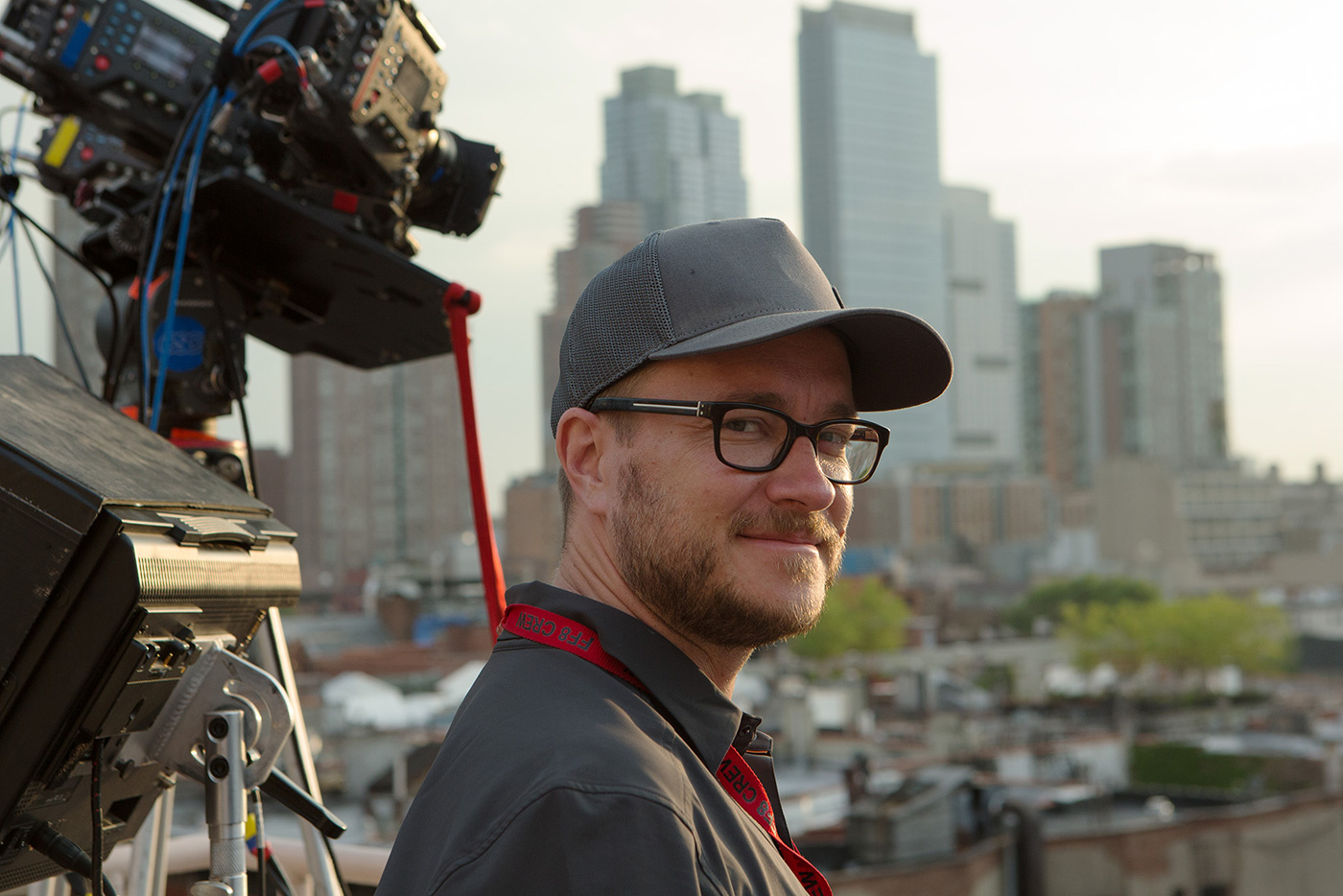
Can you tell us how you choose the various VFX vendors?
It’s mostly about past experiences and knowing what the vendors are capable of and what their strengths are. Capacity is also a huge factor. When you have a show with 2600 VFX shots you need heavy hitters that can take on a lot of shots. We still ended up with a lot of vendors but we tried to keep it as manageable as possible. Budget also plays a big roll in deciding what vendors you award. Money is always a driving force.
How did you split the work amongst these vendors?
Digital Domain was responsible for most of the third act in Russia. Double Negative did the second act in New York with the Zombie cars. Rodeo FX did the Berlin wrecking ball sequence. Pixomondo did the opening Cuba race and a bunch of mini sequences throughout the film. Cantina Creative was responsible for all the graphics throughout the movie. Rise FX did the final New York rooftop sequence. Trixter and Raynault FX also did some fantastic work throughout.
Can you tell us more about your collaboration with their VFX supervisors?
I’m a big believer in working closely with the vendor supervisors and having them on set when their sequences are being shot. Those relationships are so important. You can’t help but become close when you are in the trenches together on a daily basis. That familiarity pays huge dividends later when you are in post. Communication is everything and it’s much easier when you know that person on the other end of the line. Jay Barton of Digital Domain, Alex Wang at Double Negative, Nhat Tran from Pixomondo, and Philippe Soeiro of Rodeo FX were all phenomenal to work with and I’m proud to have them as friends.
The vendors are all around the world. How did you proceed to follow their work?
It wasn’t all that bad on this one. Most of the work was being done in Vancouver which is in the same timezone. Montreal is only three hours different so that’s manageable. Germany was the biggest time difference but we scheduled accordingly. CineSync makes it all possible. I can’t imagine how we would do it without that bit of software.
Can you tell us more about the previz process?
Basically all of our big action sequences get prevized to a very fine level. That becomes the template for how everything gets planned and shot. These movies would be extremely difficult to make without previz. Proof was our previz vendor and has been since at least TOKYO DRIFT. They were on early in preproduction and stayed on to provide postviz until the movie was finished. Proof rocks!
The movie opens in Cuba. It’s a first for a US blockbuster. Can you tell us more about that and your work on this sequence?
We broke new ground shooting in Cuba. Our producer Michael Fottrell and locations manager Eric Hooge pulled off an amazing feat getting the two governments to come to the terms that allowed this to happen. I didn’t have the good fortune to be with the crew that went to Cuba but by all accounts it was an amazing experience. It certainly gave our movie something special.
In New York, Dom’s car is attached to other cars. How was the shooting for it and how did you enhance it?
Well… they attached the cars together and pulled. That’s what is so amazing about our SPFX and stunts teams, if there is a way to do it practically then that is what we do. Now that doesn’t mean that it all worked in camera. The cables were very thick and did not attach to Dom’s car in the picture correct locations. Double Negative had to do major amounts of surgery to the shots and lots of reconstruction. The beauty of it is that you get the correct action on the cars and it looks real.
How did you capture the datas to recreate New York?
That was a major undertaking. Alex Wang of Double Negative detailed out a very concise plan of how they wanted to document the city. Once we had his plan production went through all the various channels in New York and got permission for the Dneg crews to do their thing. They lidar scanned and photo documented large sections of the city from both the ground and rooftops. We also sent up a helicopter for an afternoon and did photogrammetry passes on sections of the city.
The movie has a lot of impressive stunts. How did you work with the stunt team to enhance their work?
We always have a close working relationship with the stunt team. The goal is to always shoot the stunt practically and use VFX to augment, enhance, and clean up the frame. There’s a lot a cleanup. Only when the stunt doesn’t work out or is too dangerous or impractical do we step in and CGI a shot.
Can you tell us more about the digi-doubles creation and for the various cars too?
We only use digi-doubles when it’s absolutely necessary. For the most part it’s the actors or stunt doubles doing the work. Every hero car gets a CG double built to the most exacting standards. When we have to use a CG car it has to standup perfectly against the hero practical vehicle.
The final sequence is a massive action battle over the ice. How did you approach it?
The goal was to shoot as much as possible in Iceland and for VFX to fill in the gaps when necessary. Unfortunately the weather in Iceland did not cooperate. When we were shooting on land and needed snow there was none. When we were on the frozen ice lake shooting we didn’t want snow but there was tons of it. There was massive amounts of environment recreation that had to happen to bring all the footage together and make the experience convincing. DD did an exemplary job of creating that environment and putting all our vehicles into it.
Can you tell us more about the filming on the ice?
It’s a big challenge. Especially when there’s a foot of snow covering the ice. Large swaths of the ice had to be cleared and unfortunately the ice doesn’t look very good once you plow the snow off it. The other challenge is that there’s nowhere to hide the crew. You end up seeing a lot of junk in the frame that you don’t want there. Much of the time DD just kept the cars and replaced everything around. Falling through the ice is also a real problem. There’s a big safety concern when you shoot on this type of location.
How did you work with Digital Domain on this impressive sequence?
Jay Barton the VFX supe from DD was in Iceland the whole time. He realized the challenges that lay ahead for them and planned accordingly. He knew that their original slate of work had expanded dramatically when the weather didn’t work out. Once we were in post and the sequence started coming together it was just a matter of making sure that they had the resources to do what needed to be done. They did a fantastic job.
The sequence involved massive explosions. Can you tell us more about it and how you extend them?
For the most part we shot large scale explosions either on location or later on as elements. There were CG enhancements where necessary but the real thing is always the best. We shot some of the biggest explosions I’ve seen in my career. J.D. Schwalm was our SPFX supervisor on the show and I think he had a lot of fun doing those explosions.
Which sequence was the most complicated to create and why?
The third act in Russia was just an enormous amount of work as I stated earlier. That would be the winner.
Was there a shot or a sequence that prevented you from sleep?
I didn’t get a lot of sleep on this show.
What is your best memory on this show?
Working with a crew that I know and love. It’s pretty awesome to do this kind of work with people you consider your friends.
How long have you worked on this show?
I was on the show for just a little over a year.
What was the size of your team?
Huge. During shooting we had dozens of people on our team.
What is your next project?
I’m on it now in Australia. We are getting ready to go to camera on AQUAMAN very shortly.
A big thanks for your time.
© Vincent Frei – The Art of VFX – 2017


